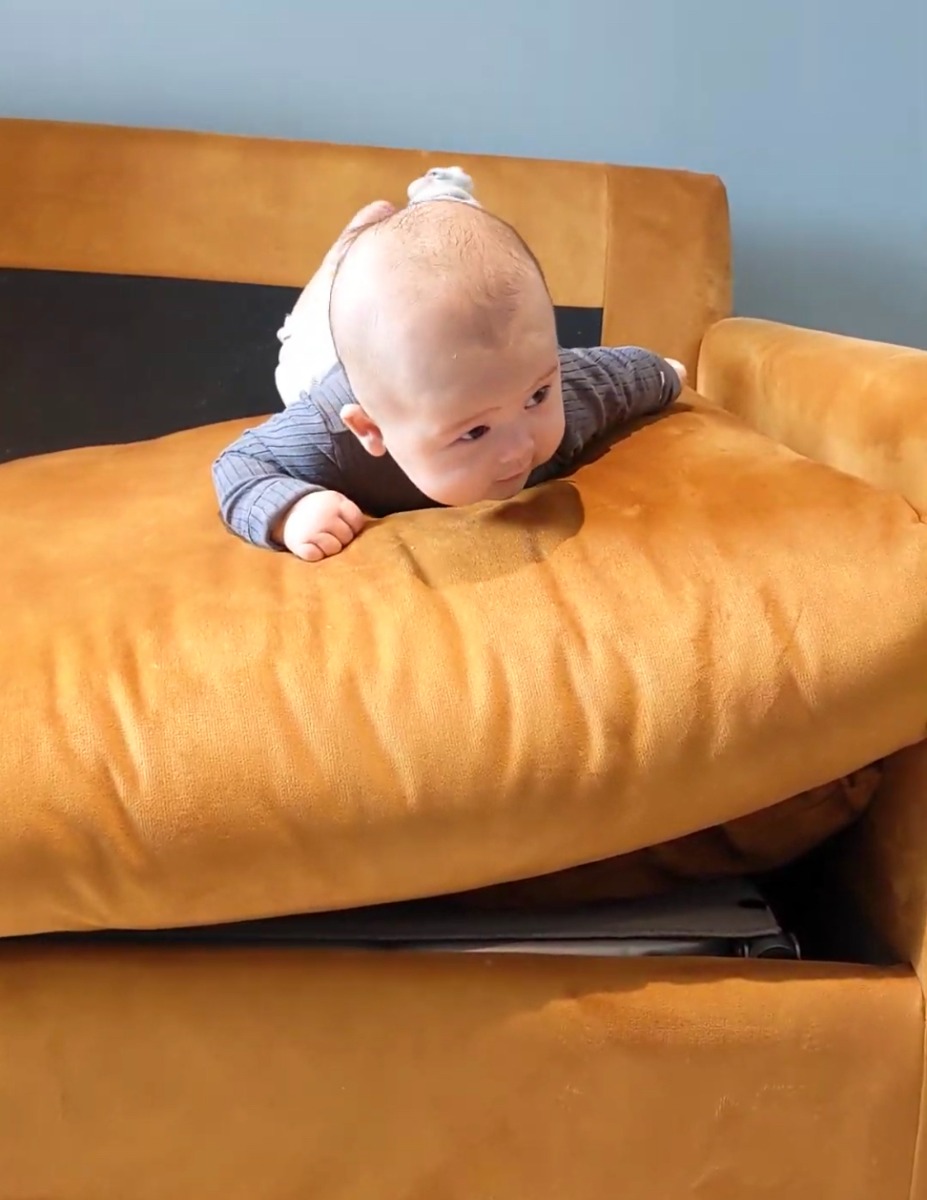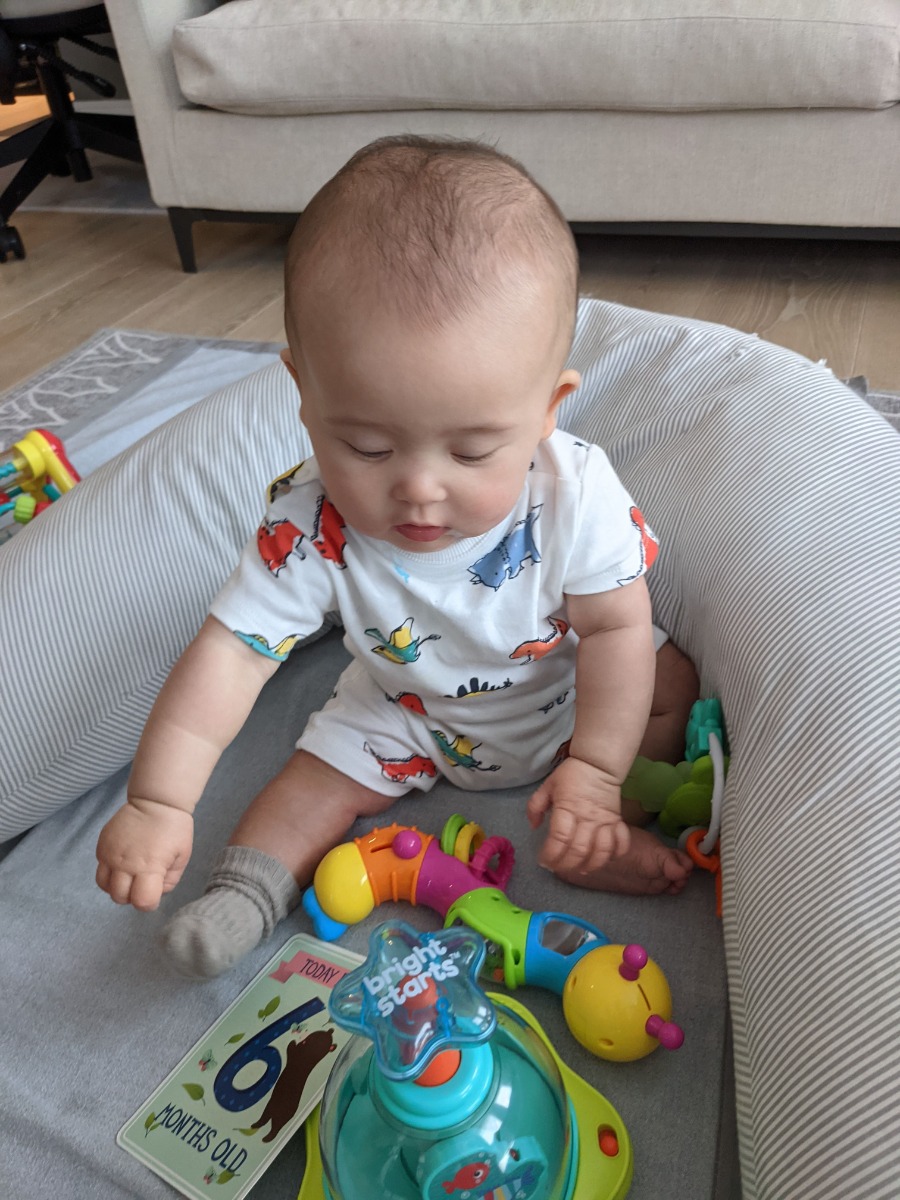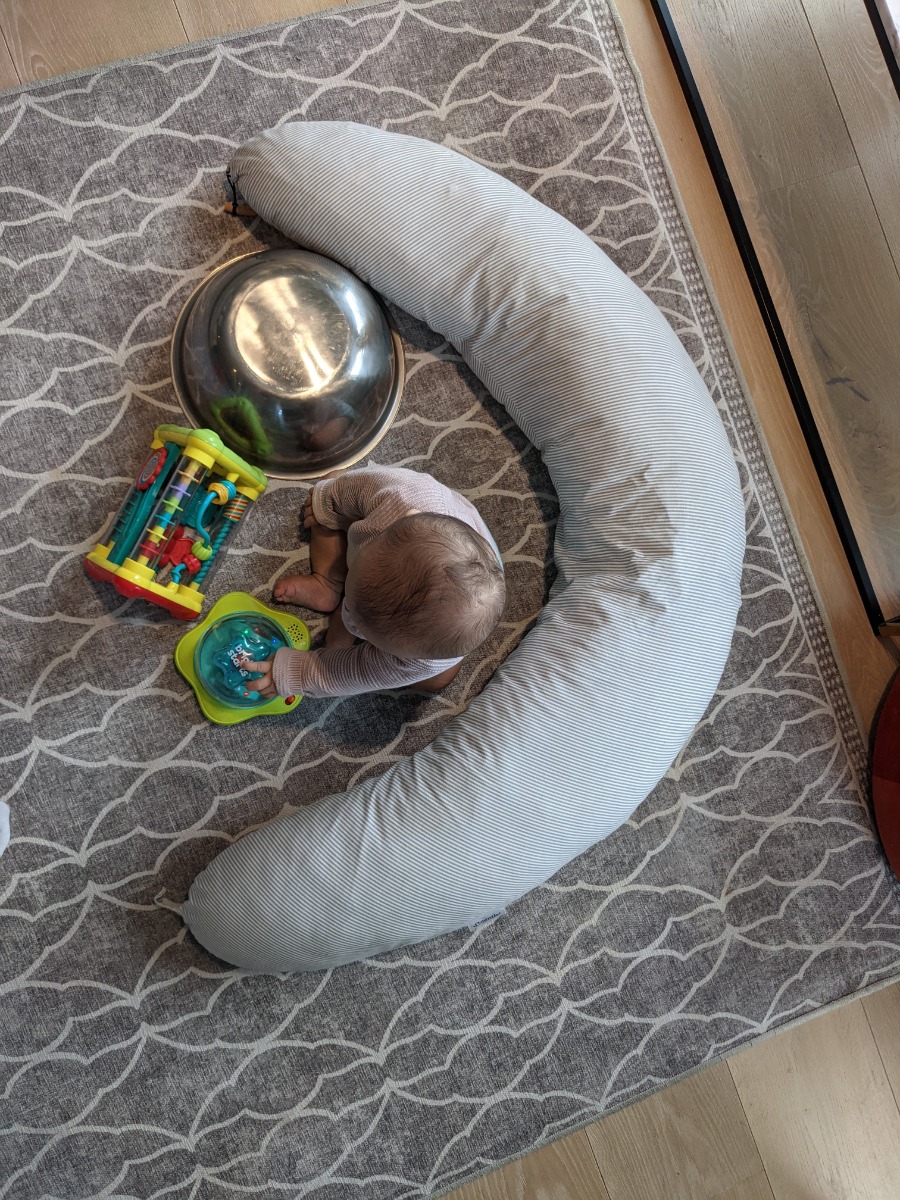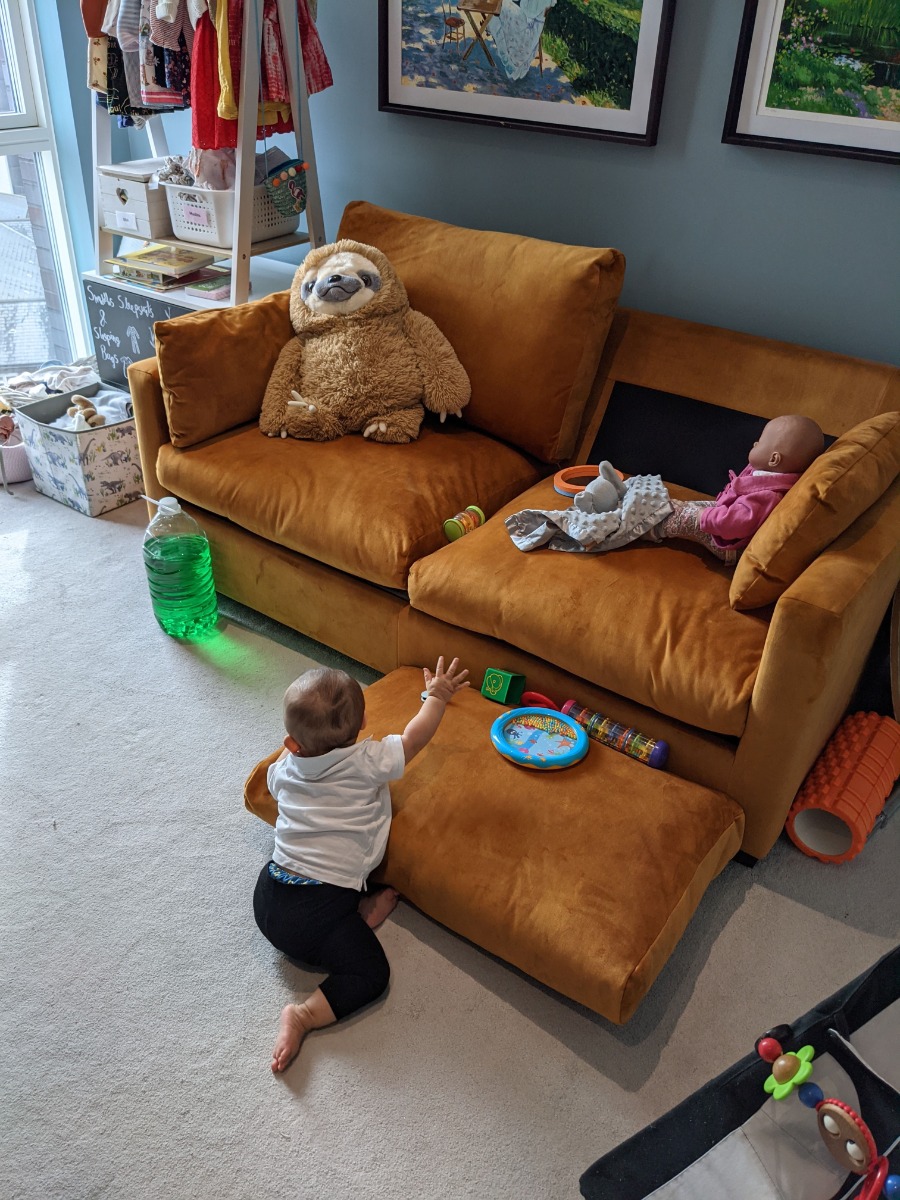Cookies and Privacy
Daytot processes information about your visit using cookies to improve site performance, facilitate social media sharing and offer advertising tailored to your interested.
By continuing to browse our site, you agree to the use of these cookies. For more information see our
Privacy & Cookie Policy.
Stage 2 - Moving Around to See and Reach

Babies are learning new skills all day, every day! People talk lots about major milestones like rolling, sitting and walking. But the truth is, all movements are big milestones! Over this blog series, paediatric physiotherapist and new mum, Hannah Spink, talks through stimulating bonding routines for parent and baby, that encourage movement and promote gross motor development. What’s also exciting is that these are great ways for parents to have fun, relax and enjoy their new baby. So grab a cup of tea, get comfy and enjoy these special activities together.
Stage 2 - Moving Around to See and Reach
At this stage, we are working towards sitting and rolling. Your little one is making new connections in their brain every day, and feeling the ground beneath them, and different objects around the house, helps to put everything into place in the map of their brain. Here are some fun activities that can help your baby to enjoy their new found movement! Rolling develops the trunk muscles – the muscles around the spine that help hold it up against gravity, and stabilize the body when baby is reaching and grasping toys. Sitting gives baby a new perspective to play and discover the world – they are higher up, can see more things around them, and can reach to further distances. Sitting not only improves trunk strength further – it works on vital cognitive skills. A baby who can sit, has saving reactions against gravity. This is a tricky brain skill that requires refined knowledge of cause and effect. If baby falls to the right, they have to quickly put their hand out! All of these reactions are tricky and take time to learn. The following tasks will help baby to develop the mental, physical and balance skills required for sitting and rolling.
Suitable for:
Try these activities when your baby can push up on their tummy with extended arms, shows signs of beginning to roll by turning their head, and can hold their head upright when being held. Your little one needs to show some signs of working their muscles when placed in sitting – trying to hold themself up.
You will need:
- Lots of cushions, or a pregnancy/feeding cushion.
- Toys to knock over such as a tower, rainmaker, or skittles.
- Noisy or light up toys, and baby’s favorite, most motivating toy!
- A soft padded surface, and a sofa for rolling practice.
Activity 1 – Learning to Roll

Make a gradient with your sofa – remove the top large cushion, place a cushion under it on one side, to make a slope. Lie baby down on their tummy, facing you. Place a toy to the side, and shake it, try to get baby to look towards the toy. Help them start the roll by helping them push up through one arm. Let gravity do the rest, and watch baby roll to the side, then give them the toy! This helps to make the connection that rolling = getting somewhere! We are making the activity functional and useful. Try to let baby figure out the manoeuvre and get their arm out themselves. If their arm becomes stuck, lift their shoulder slightly to free it up, rather than pulling it out. This teaches baby to get the weight off their shoulder themself.
Try the same activity with baby lying on their back, and bring a toy to the side so they can see it. To progress this exercise, when baby can consistently and confidently roll with the gradient, you can make the gradient shallower by adding a different item under the pillow. Over time, baby will not need a gradient and will roll on the floor.
This activity breaks down the stages of rolling. It means baby can practice the maoeuvre and body position without needing momentum – gravity does that for them! Then when they have mastered this part of the skill, you can add gravity and do it on a flat surface.
Activity 2 – Learning to Sit


It is natural to want to stop baby falling when they start to hold themself in upright positions, but here we are going to do the opposite! We all learn from mistakes. Falling is a mistake, and preventing falling is preventing learning! Some babies don’t like falling at all, and we can help them tolerate this natural part of life, by starting with sitting on a soft, padded surface, and allowing an ‘uh uh’ moment! When we do this, babies are more resilient later on, and are willing to try out more advanced movements to take their gross motor skills to the next level.
When learning to sit, babies lean through their arms to stop themselves from falling. This means, they can’t play with their favorite toy that requires 2 arms, and lots of concentration! So we need to give them easy toys such as a tower to knock over. Or sometimes, just entertainment is enough at this stage! Think singing, dancing or reading a book.
Have a soft padded surface, and lots of cushions spread out. Place baby in a sitting position, with cushions around but not touching baby. If the cushions, or a pregnancy cushion is placed against baby’s trunk, we are teaching them to fall, and they will feel the support and lean into it. The cushions are to prevent a bump, not prevent sitting!
When you have placed baby in sitting, use stimulation, singing, praise, and talking. Let them fall, and say ‘uh oh’, slowly bring them back up, and start again. You can also place their extended arm out on the floor, when they are about to fall in that direction. If baby does not like the feel of falling, start out gradually and increase. Let them fall a few inches and catch them, then a bit further, and so on. This builds up their confidence as they learn that falling is safe, and useful.
Doing this activity teaches baby about gravity, and how to contract their muscles to stay upright. Babies who learn to sit with falling, learn to protect themselves in other, more risky positions such as pulling to stand, later on in life.
Setting up a Play Space

At this stage, when baby is enjoying active time on the floor, place toys out of their reach. Use stools, cushions of different heights, and blankets, to put toys over, under and inside. This encourages moving and exploring around the environment, and increases motivation to try new movements.
How to Dress Baby for Play
When baby is sitting, make sure any rompers or sleepsuits have plenty of length and room, and no feet. This allows baby to move their joints through complete range of movement to practice new skills. Bare feet is best when safe and practical, to help build connections from the skin to the brain and muscles about the body’s whereabouts.
Items we Love
- Large, push spinning tops such as John Lewis Spinning Tumble Ball Dome. This helps baby look up and sit in a good posture in sitting, giving them something stable to lean through with arms.
- Halilit musical rattles – these are easy and quick to grasp when baby has rolled.
- Clothes with elastane in the fabric – this stretch makes sure clothes do not prevent any movements.
- Baby Bjorn step stool – this is great for placing toys under and over, encouraging reaching and rotating in sitting.
Blogger Profile
Hannah is a neurodevelopmental physiotherapist, and clinical director of Bumble Bee Physio. Since having her own daughter, Hannah set up Baby Gross Motor classes; inclusive baby groups for babies of all abilities, to have fun and work on developmental exercises, in a motivating and playful environment. Hannah is passionate about babies reaching their full potential from as young as possible, and learning physical skills whilst integrated through cognitive development, such as cause and effect, learning from falling, and being exposed to gravity.
